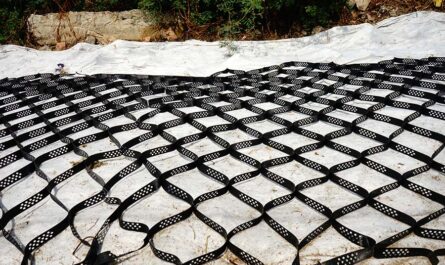Adhesives play a vital role in our daily lives, holding together everything from postage stamps to aircrafts. However, as technologies advance, so do the demands placed on adhesives. Specialty adhesives have emerged to fill highly technical functions across industries.
Medical Advances Through Biocompatible Bonding
The medical field relies heavily on specialty adhesives to deliver life-enhancing devices and treatments. Implantable devices like pacemakers require biocompatible adhesives that will bond components securely inside the body without triggering negative immune responses. Similarly, surgical adhesives help surgeons precisely rejoin tissues and internal structures.
Advancements in polymer chemistry have led to adhesives designed for specific medical applications. For implantable devices, researchers have formulated ultra-strong but flexible cyanoacrylate adhesives. Meanwhile, natural protein-based adhesives aim to heal wounds with minimal scarring. Surgical teams also benefit from light-curable adhesives that instantly bond on command.
Looking ahead, specialty bioadhesives could facilitate regenerative medicine. Scientists envision using adhesive scaffolds and hydrogels to promote cellular regrowth for replacing damaged organs or tissue. Others explore adhesive payloads for time-release drug delivery. The medical frontier seems wide open for creativity with specialty adhesives.
Enabling Cutting-Edge Electronics
The electronics industry similarly leans on precision adhesives. With devices shrinking to ever smaller sizes, adhesives must fill tiny gaps and secure ultra-thin components without compromising functionality. Conductive adhesives play a key role, reliably bonding connections while maintaining electrical conductivity.
Specialty engineers have tailored adhesives for varied electronics needs. Thermally conductive adhesives efficiently draw heat away from hot components. Electrically insulative formulations prevent short circuits. Adhesives with tailored modulus accommodate flexing in wearables and displays. Optically clear adhesives seamlessly bond touchscreens. Even stretchy silicone adhesives join flexible circuits.
New frontiers require constant adhesive innovation. Developers work to formulate adhesives compatible with graphene, gallium nitride, and other advanced materials. Engineers also modify adhesives with fillers like copper particles to create adhesives tailored for specific electronic applications such as 5G technologies. The digital future relies on specialized adhesives meeting increasingly sophisticated engineering demands.
Environmentally-Friendly Assembly
As sustainability takes center stage, green assembly techniques gain prominence. Specialty Adhesives help manufacturers adopt environmentally-conscious solutions. Water-based and 100% solids adhesives reduce volatile organic compound emissions compared to solvent-based glues. Biobased and biodegradable adhesives build naturally derived performance into formulations.
Adhesive engineers tailor formulations for cleanup, recyclability, and disassembly too. Some adhesives weaken when exposed to heat, allowing easy component removal. New solvent-free adhesive removal techniques help products get rebuilt, refurbished, and reintroduced into the circular economy. Self-fixturing characteristics let parts self-align for adhesive deposition, streamlining assembly processes.
The rise of green chemistry promises more eco-friendly advances. Enzyme-catalyzed adhesion technologies could reduce hazardous material usage. Researchers explore plant terpene resins and other renewable sources as green adhesive alternatives. As environmental stewardship remains a growing concern, specialty adhesives power sustainable manufacturing techniques.
Building and Construction Troubleshooting
Buildings standing the test of time also depends increasingly on specialized adhesive solutions. Formulated for moisture resistance and flexibility, specialty sealants protect structures from weathering. Façade adhesives securely yet removably bond lightweight façade panels to high-rises. Concrete-bonding formulations join rebar to pre-cast segments for fast, scalable construction.
Adhesives specifically designed for insulation, roofing, and glazing play crucial performance roles too. Insulation adhesives capture every gap for superior thermal and air sealing. Roofing systems rely on UV-stable and temperature-flexible adhesives. Glazing adhesives smoothly couple windows to frames while managing moisture and thermal stresses.
Emerging technologies also require customized adhesives. New building materials like cross-laminated timber demand adhesives for mass timber construction. Self-adhesive waterproofing membranes streamline below-grade application. Even 3D printing construction pioneers leverage special multimaterial adhesives. As buildings evolve technologically, so do the specialty adhesives enabling advanced architecture.
Closing Thoughts
Specialty adhesives define the technological frontier, solving complex engineering needs across industries. Biocompatible, ultra-miniaturized, environmentally-preferable – targeted formulations continue pushing the boundaries of adhesion science. From medical innovations to green manufacturing to architectural advances, specialized adhesives play an integral role in progress. Looking ahead, adhesive engineers’ creative solutions will surely unlock new possibilities and help shape the world of tomorrow.
*Note:
1. Source: Coherent Market Insights, Public sources, Desk research
2. We have leveraged AI tools to mine information and compile it




